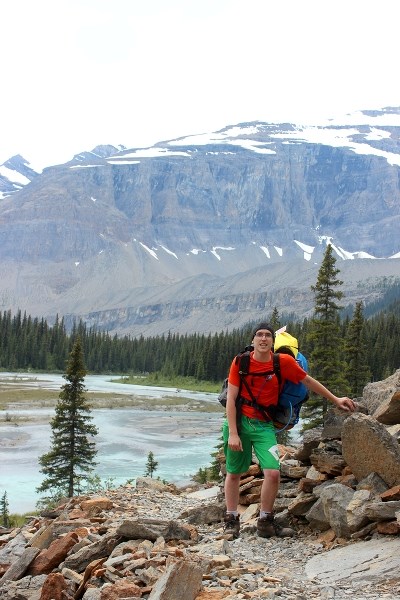There’s nothing quite like connecting with nature, and there’s nothing quite like traversing three of British Columbia’s biogeoclimatic zones en route to one of the most spectacular sights this country has to offer, Berg Lake at Mount Robson Provincial Park.
The biogeoclimatic zones are like levels in a videogame, as my old friend and hiking teammate Dave Swanson aptly titled them. Each has it’s own distinct presence and appeal, and each offers its own unique challenges, from the thin air of high altitude, to steep cutbacks and raging rivers.
Our hike opened in the interior cedar hemlock zone, a vibrantly colourful area that Dave often referred to as ‘the Shire’ or ‘the Disney level’ based on its mossy-carpeted ground, rugged terrain and vividly colourful foliage and wildflowers.
This area of the hike was not too strenuous, as we passed the emerald-blue Kinney Lake and started our climb upward, reaching a valley surrounded by mountains just as the rain started to fall.
It wasn’t ideal, but a little rain never hurt anyone, so we pressed on with our 40 lb. packs and ascended into level two, the Engelmann spruce and subalpine fir region. This level features the highest forested elevations in B.C.’s mountain ranges, laden with high cascading waterfalls and fast moving glacial streams.
Eleven kilometres into our journey, we arrived at out first destination, the Whitehorn campsite, situated at a picturesque spot in the Valley of a Thousand Falls.
We made some coffee and shared experiences with other hikers at the Whitehorn shelter, and once the rain settled for a bit, we set up our tents and did some more exploring through the Valley of a Thousand Falls before calling it a night.
We awoke the following morning ready to take on what would be our biggest challenge of the excursion, the climb through the subalpine region and into the alpine tundra.
Through five treacherous kilometres of this nine-kilometer leg, we gained roughly 500 metres of elevation, passing White Falls, the Falls of the Pool and the highly impressive Emperor Falls in the process (along with what must have been hundreds of smaller waterfalls). From there it was only three more strenuously steep kilometres until we made it above the tree line and entered level three, the most spectacular of them all, the alpine tundra.
When we saw the Mist glacier from a narrow path curling along a rocky slope, we knew we were close. Eager to get the packs off our backs, we pushed on through a spectacular alpine valley and finally arrived at the mesmerizing Berg Lake.
The sparkling blue green water was truly a sight for sore eyes as we stripped off our packs and happily collapsed for a few minutes, just admiring the awe-inspiring view of the lake, the Berg glacier feeding into it, the Mist glacier cascading alongside it, and the prominent peak of Mount Robson overlooking it all.
At times, you could hear the glaciers cracking. While I first thought it was thunder due to the clouds hovering about Robson’s peak, the noises continued after the clouds parted, and there was a distinct difference in the sound as it cracked and split continuously for as long as minutes on end.
When we arose in the morning following a few thunderous wake up calls from the glaciers, we were greeted by a fresh iceberg floating atop the lake.
We had our breakfast and parted ways with Robson’s peak, soaking in every last ounce of the experience as we passed through each level once more until we finally reached the trailhead with an overwhelming feeling of accomplishment, and exhaustion.
It was a truly unforgettable experience, and while I may be tired and sore, I can’t wait to get back out there and discover even more of the marvelous beauty this country has to offer.



